Tuesday, 4:30pm
20 June 2023
The collaboration games
London Design Biennale 2023 positions design as a tool for global collaboration. By Gabriela Matuszyk
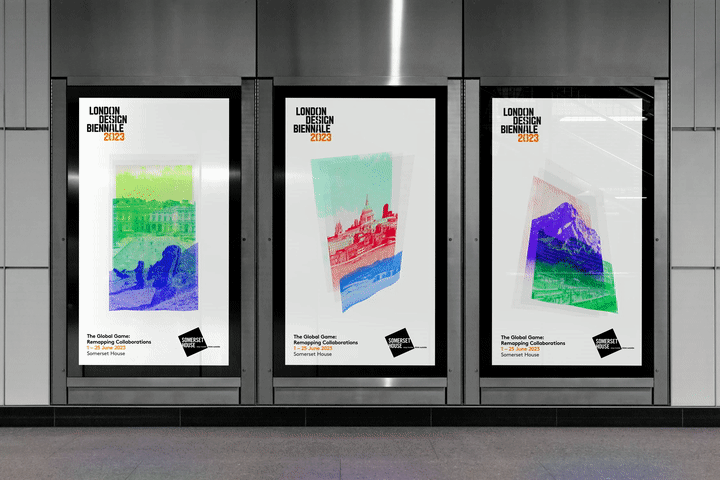
In London, the fourth London Design Biennale (LDB) is in its final week at the Somerset House, writes Gabriela Matuszyk. The event, which takes place until 25 of June 2023, brings together over 40 exhibitors who aim to confront global challenges through projects, installations, immersive experiences, digital devices, performances, and a public programme of talks and workshops. While ‘graphic design’ perhaps wasn’t a strong focus for the curatorial team, the visitors have an opportunity to explore the multifaceted way in which design can present itself through a diverse definition of the discipline.
The theme for the 2023 biennale, ‘The Global Game: Remapping Collaborations’, responds to the current global political climate by referencing Buckminster Fuller’s World Game, which was designed to solve world problems through international cooperation. The artistic director of LDB23, Aric Chen, who is also the general and artistic director at the Nieuwe Instituut, used this to challenge the typical approach to the biennale format. He said, ‘we’re not just inviting participants to ponder the topic of collaboration. We’re asking them to actually collaborate with each other.’
The visual identity for the biennale, designed by Pentagram’s Domenic Lippa and Lili Phillips, was a direct response to the 2023 theme. The design references locations across the globe while maintaining the connection to Biennale’s home, London, through colourful 3-dimensionally layered collages. The visuals incorporate soft movements in printed and digital outputs (see above), as the images appear to be printed on translucent cloth, representing the participants of the Biennale in relation to one another.
LDB23 brand identity, demonstrating split image layers.
Top. LDB23 graphics in motion.

The Biennale catalogue uses translucent layers with paper choices.
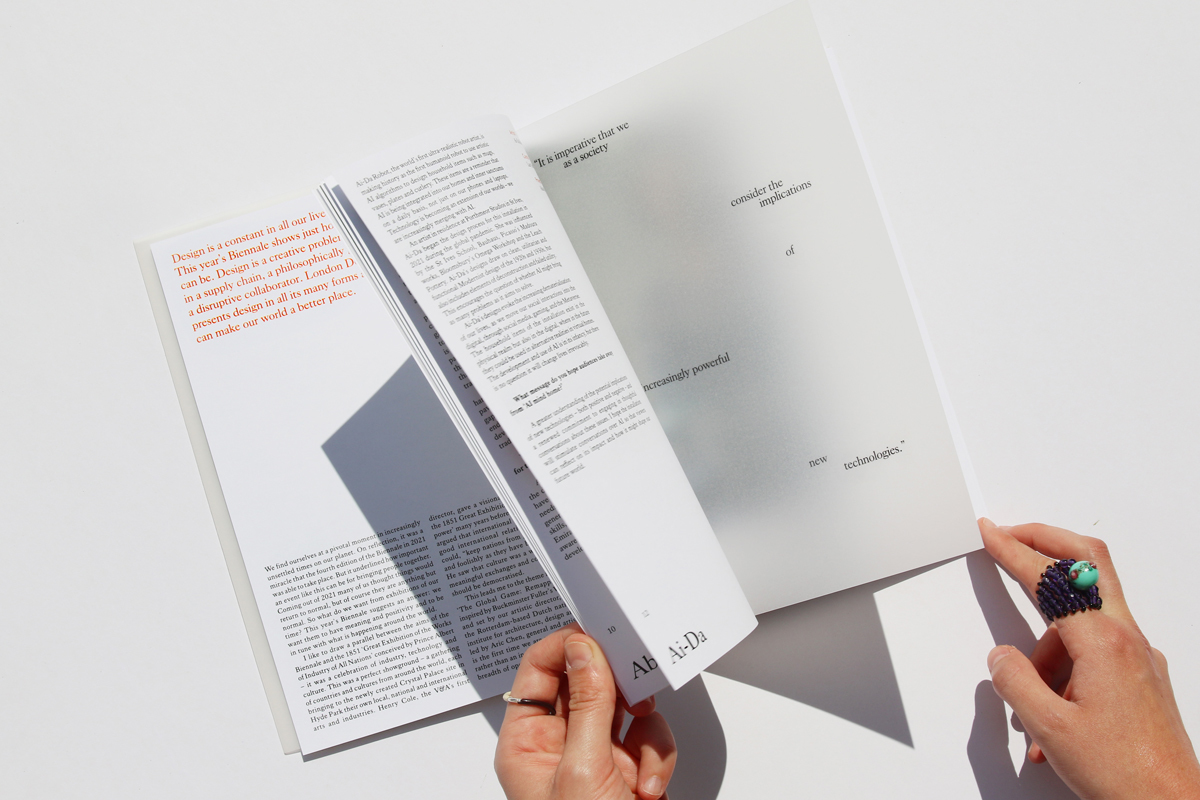
Further exploration of Fuller’s ideas was evident at the mudac The theme for the 2023 biennale, ‘The Global Game: Remapping Collaborations’, responds to the current global political climate by referencing Buckminster Fuller’s World Game (Museum of Contemporary Design and Applied Arts in Lausanne, Switzerland), with the G80 installation from Swiss collective Fragmentin. Visitors could interact with a metallic console with numerous +/– sliders, each responsible for a modern social issue such as ‘democracy’, ‘biodiversity’ or ‘cultural funding’. By increasing or decreasing any of the variables, other sliders would physically re-adjust in response, either stabilising or destabilising the world.
View of the mudac pavilion with G80 installation on the left, and Total Design timeline which references key writings on the subject on the opposite side. Photograph by Andrew Meredith / mudac.
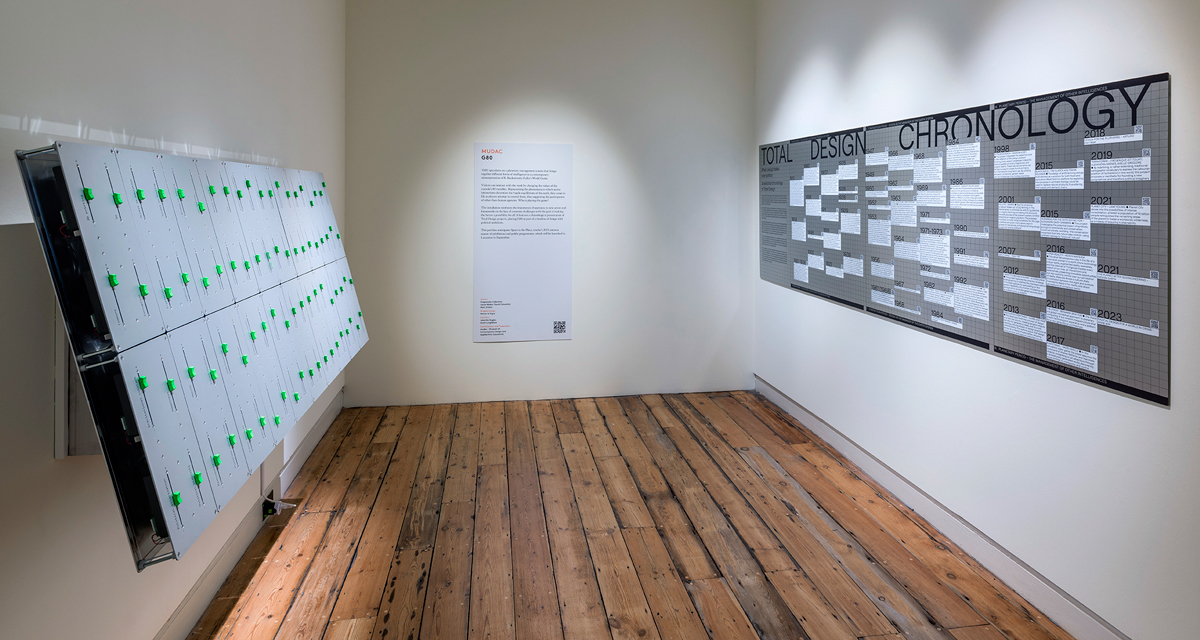
G80 installation in action. Video by Andrew Meredith / mudac.
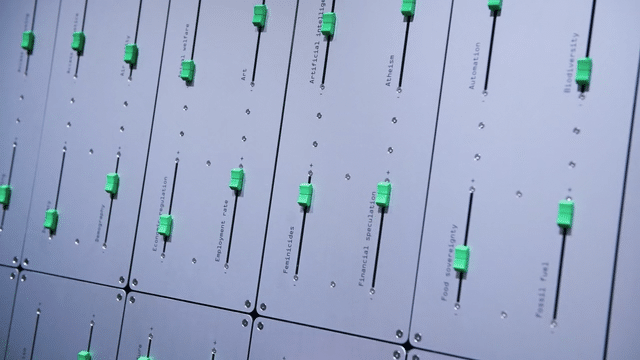
Within the landscape of LDB, specific country exhibits spotlight creativity of their respective design communities. Taiwan, with its unique geographical location and technological prowess, presents a fascinating exploration of collaboration across industries, trade, natural resources and the economy. The ‘Visible Shop’ celebrates the territory’s crucial role as a global trade hub in an installation formed of several metal manufacturing elements. The dynamic display represents the supply chain and people behind it through relentless motion.
View of Taiwan pavilion, ‘Visible Shop’. Photograph by Taran Wilkhu.
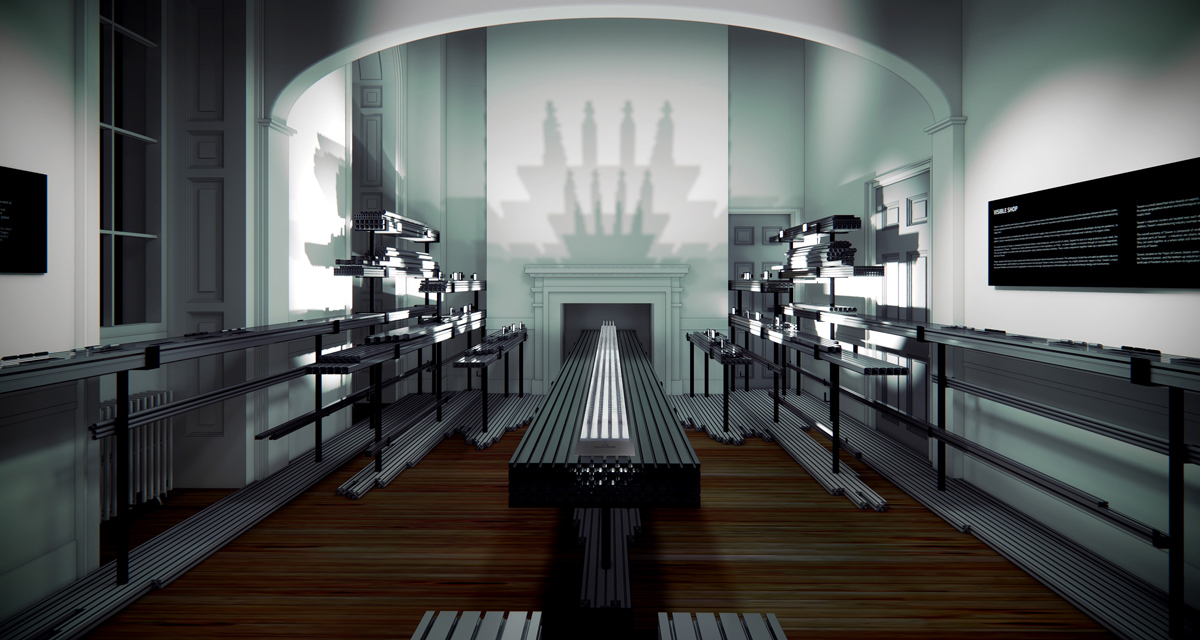
Another highlight was the ‘Poetics of Necessity’ exhibition, which focuses on a grassroots initiative of donating, transporting and installing windows to Poland’s war-stricken neighbour Ukraine. The pavilion presents a series of installations, diagrams and practical guides on how to install a wrongly sized window into a damaged building, promoting circular and collaborative design approaches. Windows became an important symbol for Ukraine’s resilience, as marked in its pavilion with taped glass panes, or on the cover of Telegraf magazine (see ‘Resistance is essential’ in Eye 104).
The Polish pavilion, demonstrating a large window fitted into a small opening. Exhibition design by TŁO Architects. Photograph by Taran Wilkhu.
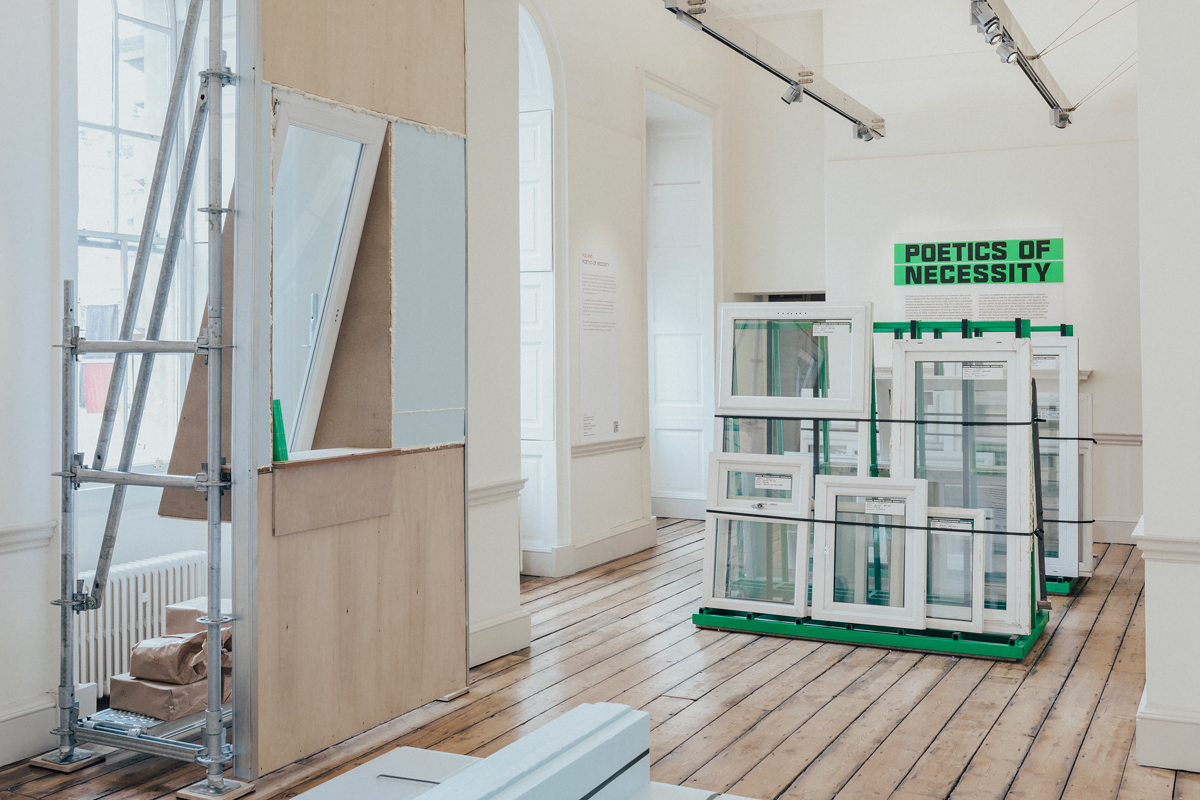
A series of DIY window-fitting diagrams. Credit: Adam Mickiewicz Institute / Zofia Jaworowska, Michał Sikorski (TŁO), Petro Vladimirov.
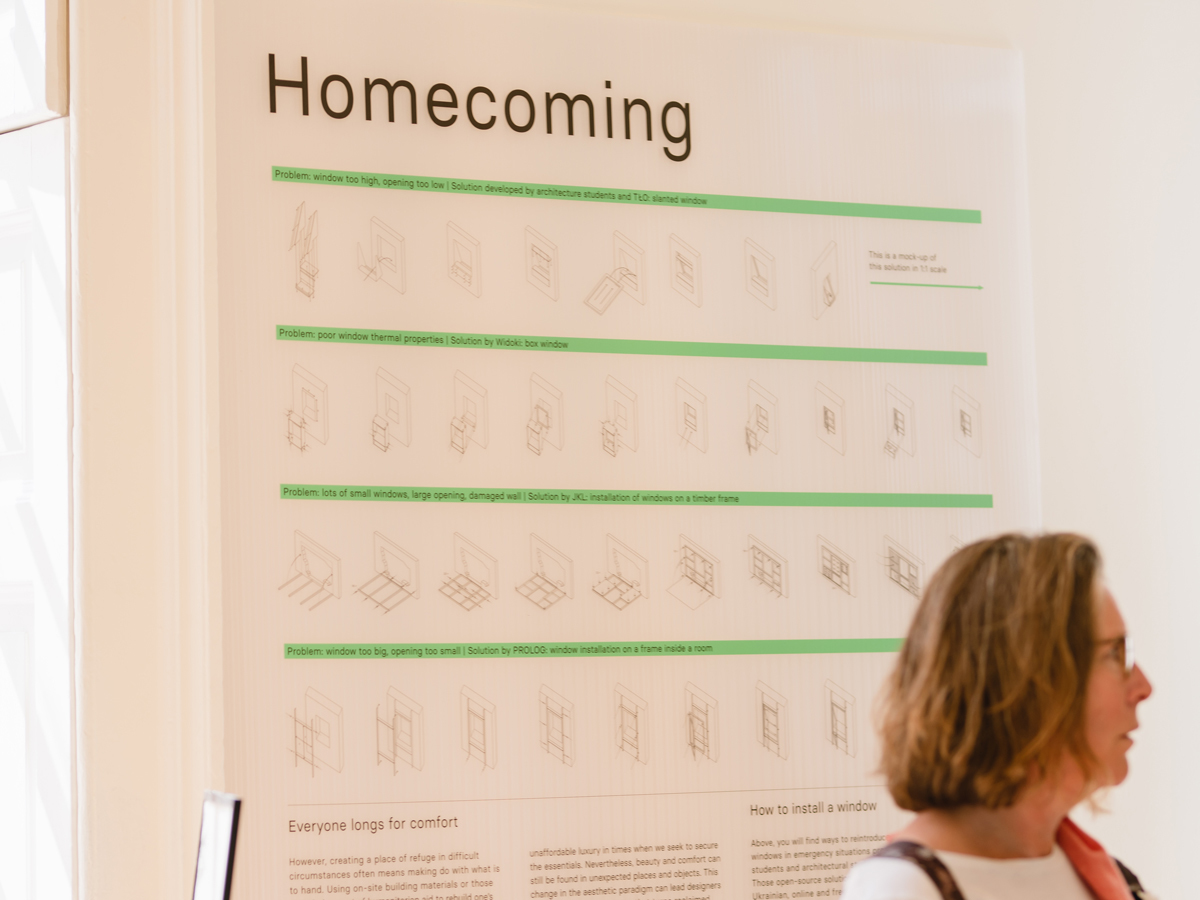
Crossing the Atlantic, the USA pavilion – aptly named ‘A Species Between Worlds’ – takes the visitors on an introspective journey through digital landscapes. After installing a specially designed AR app, the audience were able to experience several landscapes through photographic or virtual lenses. The artist behind the project, John Mack, wanted to spark a dialogue on the uncertain fate of our physical world in the face of the rapidly expanding digital universe: ‘We abdicate so much power to the device that the device becomes our reality and we become its tool.’
The visitors to the USA pavilion used an AR app to experience photographic and digitised views of natural landscapes. Photograph by Taran Wilkhu.
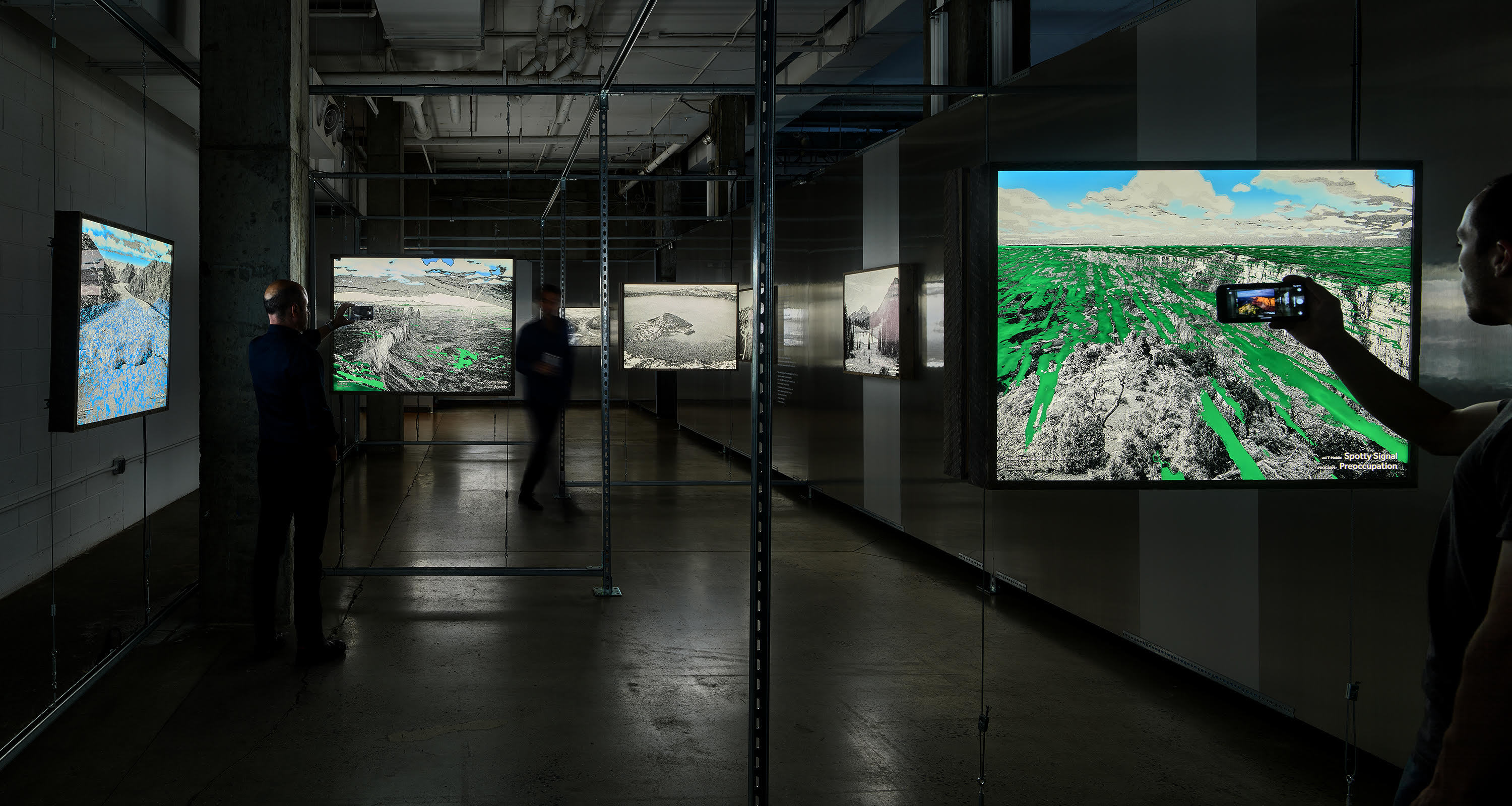
Other technology-centric exhibits included; Ai-Da, the world’s ‘first ultra-realistic robot artist’ that uses AI algorithms to design household items; South Korean pavilion presenting VR experience of historical Korean gardens; and immersive virtual visit to the national museum of the Democratic Republic of Congo.
Ai-Da Robot uses AI algorithm to design household items. Photograph by Taran Wilkhu.
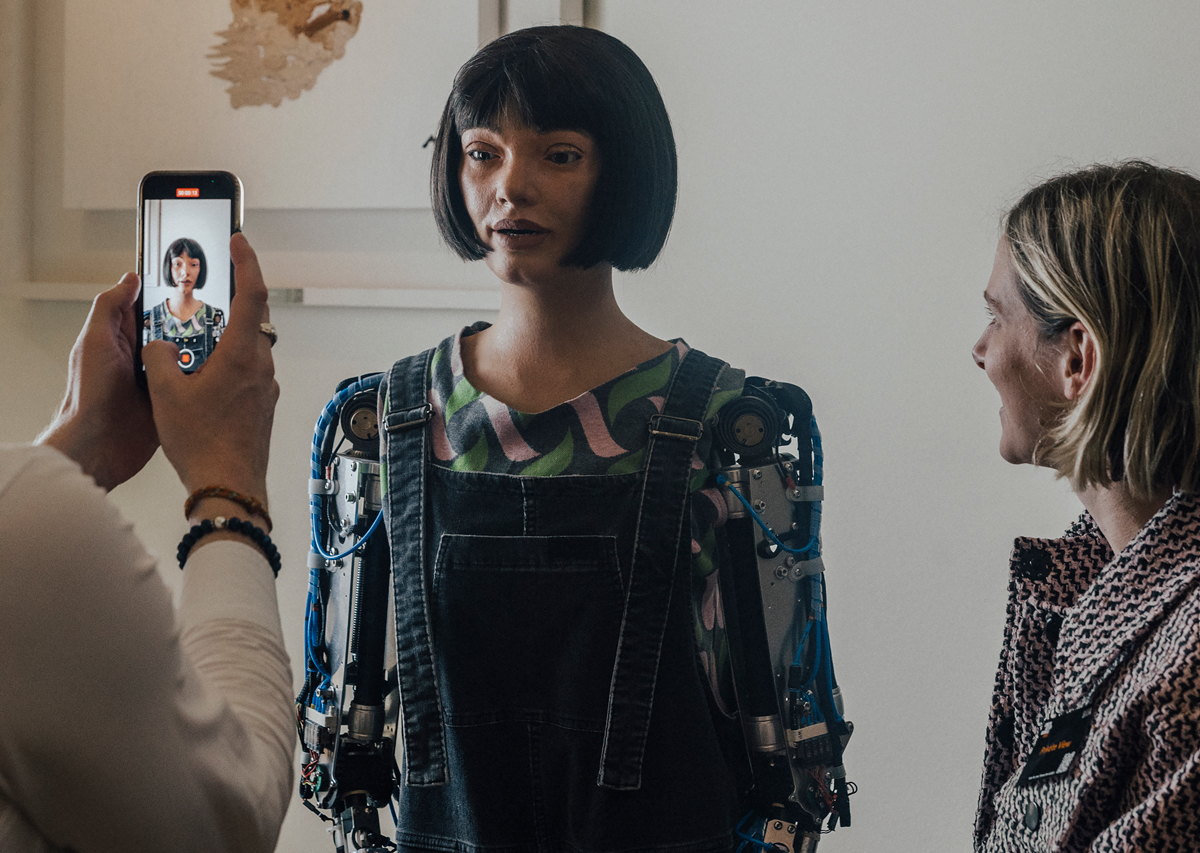
One notable addition to LDB23 is EUREKA, where design research from the UK universities is shared to with wider audience, be it exploration of materials and new technologies to cultural phenomena. One of those projects, titled ‘Arcade Britannia’ by Dr Alan Meades, celebrates the British amusement arcades and their role in seaside communities, much like Justin Burns’ research into seaside typography. By bridging the gap between academia and design practice, EUREKA highlights the vital role of research in driving creativity and solving world challenges.
‘Arcade Britannia’ project from Canterbury Christ Church University with interactive experience of British arcades, by Alan Meades. Photograph by Taran Wilkhu.
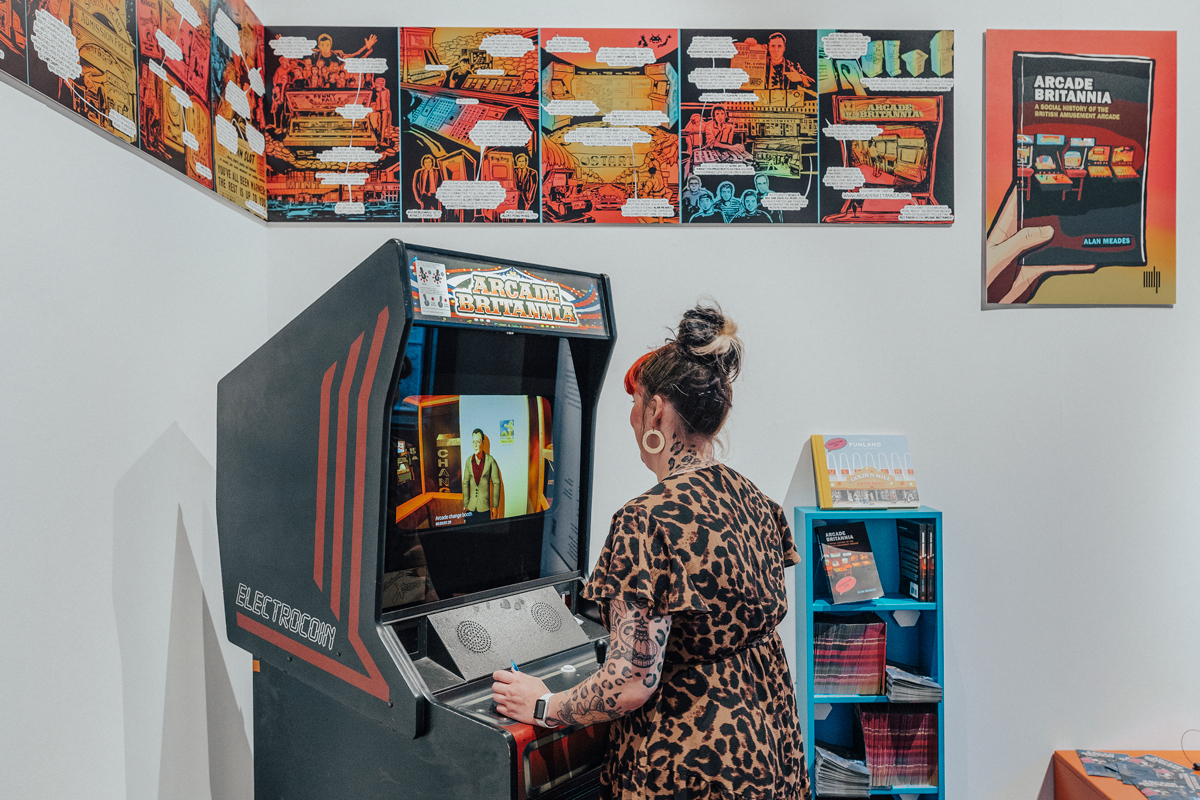
EUREKA is the latest addition to the London Design Biennale. Shown here, a project display from Kings College London. Photograph by Taran Wilkhu.
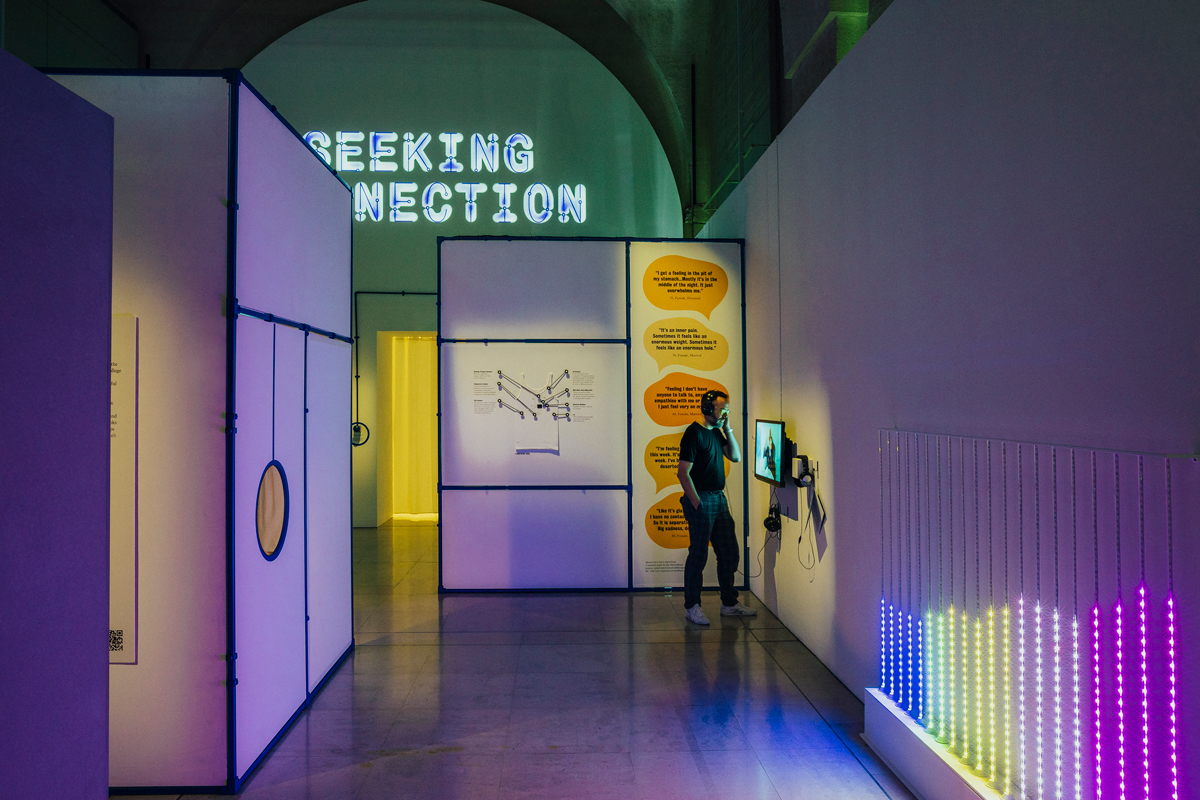
The organisers made efforts to ensure that the biennale is accessible for people outside of design disciplines, allowing a more diverse audience to take part. There is a public programme with a busy schedule of daily events, talks, performances and workshops alongside the main exhibition. Lastly, the participatory element of the biennale even extends to an online game, where Somerset House visitors can form collaborations through a dating-app-like experience.
London Design Biennale will close on 25 June 2023.
Gabriela Matuszyk, designer, writer, editor, London.
Eye is the world’s most beautiful and collectable graphic design journal, published for professional designers, students and anyone interested in critical, informed writing about graphic design and visual culture. It is available from all good design bookshops and online at the Eye shop, where you can buy subscriptions and single issues.
